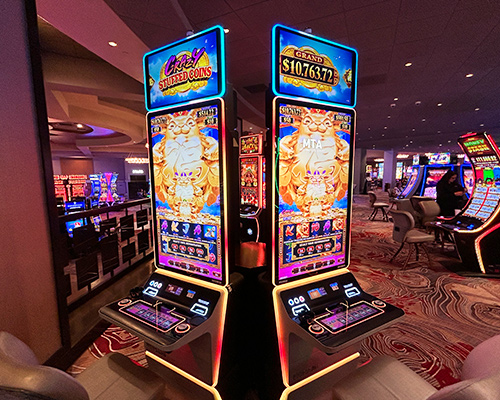
There’s no denying that slot machines, whether online or in brick-and-mortar casinos, are among the most addictive forms of gambling ever created. While their bright lights, catchy sound effects, and exciting themes have always attracted players, modern slots are specifically designed using advanced psychology and technology to keep Slot caca spinning the reels longer than ever before. Today’s slots combine rapid gameplay, immersive graphics, and clever reward systems to create a powerful experience that can hook players for hours. Unlike table games that require skill or strategy, slots offer instant gratification, making them especially enticing to players seeking quick thrills.
One of the main reasons slots are so addictive today is their use of near-miss outcomes, a psychological trick perfected over decades. When a player spins and two jackpot symbols appear on the payline with the third just barely missing, the brain interprets this as “almost winning, ” which can be even more stimulating than an actual win. Near misses release dopamine, the same brain chemical involved in feelings of pleasure and reward, and studies show these near wins can compel players to keep trying, convinced that the next spin might be the lucky one. Modern slot software is specifically programmed to generate these near-miss moments at calculated intervals to maximize engagement.
Another major factor contributing to slot addiction is the variable ratio reinforcement schedule used in their design. Like the unpredictability of a slot’s outcome, this schedule rewards players at random intervals — sometimes after one spin, sometimes after dozens — which creates a powerful compulsion to continue. This pattern of uncertain rewards is one of the most potent reinforcement mechanisms known in psychology, the same one that makes social media notifications or video game loot boxes so irresistible. The anticipation of a possible big win becomes a reward in itself, even if the actual payout is small or nonexistent.
Today’s slots also feature stunning visuals, 3d animations, and immersive audio, turning each spin into a mini event. Popular games have cinematic storylines, interactive bonus rounds, and elaborate themes that make them feel more like video games than traditional gambling. This entertainment factor distracts players from how much they’re wagering and how long they’ve been playing, blurring the line between gaming and gambling. Combined with fast-paced gameplay — spins take just seconds — it’s easy for hours to slip by unnoticed as players chase the excitement of the next bonus feature or free spin.
Accessibility has also played a huge role in the addictive nature of modern slots. With online casinos and mobile apps, players no longer need to visit a physical casino; they can spin the reels from their couch, on their commute, or even lying in bed. This constant availability increases the likelihood of impulsive play and makes it easier for casual entertainment to spiral into habitual gambling. Developers further fuel this behavior with features like autoplay, which allows hundreds of spins with no effort, and adjustable bet sizes that let players rapidly escalate their stakes without pausing to consider their spending.
Lastly, modern slots often employ sophisticated losses disguised as wins, where players celebrate flashy animations and triumphant sounds even when they’ve won less than their original bet. For example, betting $1. 00 and winning $0. 50 still triggers the same celebratory feedback as a profitable spin. This tricks players into feeling like they’re winning more often than they actually are, reinforcing continued play. Combined with loyalty programs, tournaments, and leaderboard competitions that reward frequent spinning, it’s clear that modern slots are meticulously crafted to maximize engagement — and, in many cases, addiction.